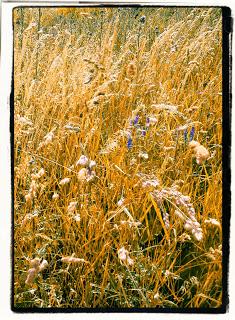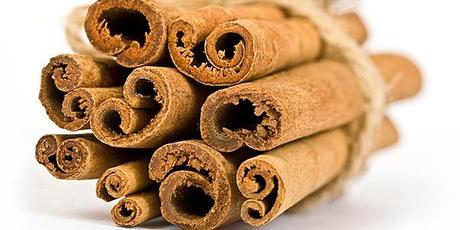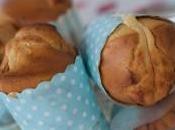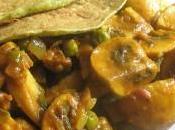Colva What is it? A sweet typical from Puglia, very tasty and not suggested for diet: it is made for the November 2. I've tasted it recently made by the grandmother of one my friend. How wonderful! The recipe is based on the wheat, so if you want to follow the traditional method of preparation would be as long as the grain is prepared (first soak them in water for about 3 day and then cooked in water) . You have to prepare the almonds before toasted, then shelled and boiled: in the past kitchens there were not the ingredients that we can find ready-made in some supermarkets or grocery store.
 The term COLVA derived
from the Byzantine Kolbaand
the dialect name is cicc cuott (when I
tried to repeat the exact spelling it was quite
a disaster): in fact, the term derives from the Greek and this is not
surprising because Puglia was one
of the settlements of the Magna Greek, and we find this ancient and
prosperous domination in some traditional aspects that made the South of
Italy the home of an ancient culture with
a great artistic elevation.
The term COLVA derived
from the Byzantine Kolbaand
the dialect name is cicc cuott (when I
tried to repeat the exact spelling it was quite
a disaster): in fact, the term derives from the Greek and this is not
surprising because Puglia was one
of the settlements of the Magna Greek, and we find this ancient and
prosperous domination in some traditional aspects that made the South of
Italy the home of an ancient culture with
a great artistic elevation.
The wheat- main character of this recipe- is the symbol of the resurrection from the dead, but not only in the Catholic concept, also in the concept of cyclical nature of birth and death.
The cinnamon is a symbol of rebirth: Herodotus thought that was born from the nests of the Phoenix (mythological symbol of rebirth) and he speaks extensively about it in his work The Histories.

the pomegranate
So I wanted to give you this recipe simplified for us that we have less skilful hands of the grandmother of my friends. Before the birth of the colva existed in Greece a recipe made with the seeds that was prepared for the day of Hirtri (their day of the dead), then the similarity and the probable origin is tangible.Let's start with the recipe but the suggestion is: start do it three days earlier because the wheat must soften (you do not have to do anything but soak it and wait).
WHAT YOU NEED for 4 people
550 g of wheat 200 grams of dark chocolate (even milk if you love super sweet) 100 g candied citron 180 g Walnuts 100 gr almonds 1 Pomegranate Cinnamon (if using cinnamon powder directly is less traditional but more comfortable) Vin cotto
WHAT TO DO
Wash and soak the wheat in water for about three days
After three days pour it into a pot with water and let it boil
Chop the walnuts and the almonds Cut the candied citron into cubes (if you want to sell it already diced) Take the chocolate and break it into very small pieces Open the pomegranate and take the seeds

the cinnamon
Put in a bowl the wheat, the walnuts, the almonds, the cedar, the chocolate, the cinnamon, the seeds of the pomegranate and mix all Add some vin cotto and let stand covered for about 4 hoursAs you can see, the process is only long but very easy so why not try to enjoy a typical recipe from Puglia? You have the choice trick or treat?
My posts related with this topic http://www.learnitalianow.net/2012/10/halloween-in-italy-now-in-italy.html http://www.learnitalianow.net/2011/10/pan-dei-morti-for-halloween.html http://www.learnitalianow.net/2011/11/halloween-in-sicily.html
Che cosa è? Un dolce tipico pugliese molto gustoso e per niente dietetico che si prepara il giorno 2 novembre. L’ho assaggiata di recente fatta dalla nonna di una mia amica. Che meraviglia! La ricetta è a base di grano duro quindi se si volesse seguire il metodo tradizionale la preparazione sarebbe lunga in quanto va preparati il grano ( prima in ammollo in acqua per circa tre giorni e poi cotto sempre in acqua) e le mandorle che devono essere tostate, sgusciate e lessate: nelle antiche cucine non c ‘erano questi ingredienti che oggi possiamo trovare già pronti in qualche supermercato o

COSA SERVE per 4 persone 550 gr di grano 200 gr di cioccolato fondente ( anche al latte se siete amanti del super dolce) 100 g cedro candito 180 g Noci 100 gr mandorle 1 Melagrano Cannella ( se usate la polvere di cannella direttamente è meno tradizionale ma più comodo) Vin cotto
COSA FARE
Lavare e mettere a mollo il grano in acqua per circa tre giorni
Trascorsi i tre giorni versatelo in una pentola con abbondante acqua e fatelo lessare
Tritare noci e mandorle Tagliare il cedro a dadini ( se volete lo vendono già a dadini) Predete il cioccolato e frantumatelo a pezzetti molto piccoli Aprite il melograno e ricavatene i semi Mettete in una ciotola il grano, le noci, le mandorle, il cedro, il cioccolato , la cannella , i chicchi di melograno e mescolate Aggiungete del vin cotto e lasciate riposare coperto per 4 ore circa
Come vedete il procedimento è solo lungo ma assolutamente non complicato quindi perché non provarci per assaporare una tipica ricetta pugliese? A voi la scelta dolcetto o scherzetto?





